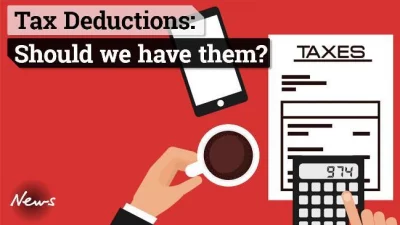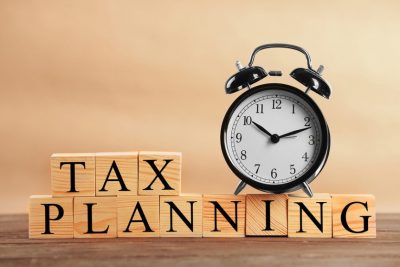From tax cuts to energy rebates, here’s what to watch after the new term begins
With Labor returning to government and holding a majority in the House of Representatives, attention is turning to the promises they made during the campaign—and what they still want to achieve. While some measures are already in motion, others may rely on support in the Senate or further development. Here’s a detailed summary of the key initiatives that could affect individuals, small businesses, and high-energy industries in the new term.
For Individuals
1. Personal income tax cuts (confirmed)
Starting from 1 July 2026, income tax rates for individuals will begin to drop:
- The tax rate for the $18,201–$45,000 bracket will reduce from 16% to 15% in 2026–27, and further to 14% from 2027–28.
- The maximum tax saving is estimated at $268 for the first year, and $536 in the second year. This change has been legislated and is set to take effect as planned.
2. $1,000 shortcut work-related deduction
A new simplified tax deduction has been introduced, allowing taxpayers who earn employment income to claim a flat $1,000 deduction without needing detailed substantiation.
- Taxpayers with higher actual expenses can still opt for itemised deductions.
- This shortcut deduction is not available for those earning only business or investment income.
- Additional non-work deductions (such as donations or tax agent fees) can still be claimed.
3. Energy rebate continues
From 1 July 2025, eligible households and small businesses will receive a further $150 energy rebate. The rebate will be automatically applied to electricity bills in quarterly instalments through the end of the 2025 calendar year.
4. Discount on home battery systems
In a move to support household energy storage, the government is introducing a 30% discount on the installed cost of home batteries, starting 1 July 2025.
- The average savings per battery system are estimated around $4,000.
- This expands on the existing Small-scale Renewable Energy Scheme.
5. First home buyer scheme expansion
The existing 5% deposit Home Guarantee Scheme will be expanded:
- Income caps and place limits will be removed.
- Eligible Australians, including permanent residents, who have never owned property (or haven’t owned one in the last 10 years) can purchase with a 5% deposit without paying Lenders Mortgage Insurance (LMI).
- The scheme remains available only to owner-occupiers.
Superannuation – Will the 30% tax return?
A proposal from the previous term—Division 296—would apply a 30% tax on earnings of superannuation balances over $3 million. The measure lapsed when Parliament dissolved before the election, but could return in this term.
- The Greens may support the bill if changes are made, including lowering the threshold to $2 million and banning borrowing by super funds.
- The proposed tax would apply to both realised and unrealised gains, allowing for losses to be carried forward.
For Small Businesses
1. $20,000 instant asset write-off extended
The Government confirmed that the instant asset write-off threshold of $20,000 for small businesses will be extended until 30 June 2026.
- This applies to businesses with turnover under $10 million.
- Eligible assets must be first used or installed ready for use by this date.
2. National small business strategy under consultation
The government has launched a national consultation on how federal, state, and territory governments can better support small businesses.
- Key focus areas include simplifying compliance, streamlining digital services, and improving communication.
For Industry: Focus on Clean Energy Transition
Green Aluminium Production Credit
The government has committed $2 billion for a new Green Aluminium Production Credit aimed at encouraging aluminium smelters to transition to renewable electricity.
- Why aluminium? It is the second most-used metal globally and accounts for about 10% of Australia’s total electricity consumption.
- Tomago Aluminium, the country’s largest electricity user, uses approximately 40% of its operating costs on energy.
- Under the scheme, eligible smelters can enter into 10-year contracts to receive emissions-linked credits based on reduced Scope 2 emissions (indirect emissions from electricity use).
This initiative is both an environmental and economic strategy—intended to support industry competitiveness while driving decarbonisation.
Pitt Martin Group is a CPA accounting firm, providing services including taxation, accounting, business consulting, self-managed superannuation funds, auditing and mortgage & finance. We spend hundreds of hours each year on training and researching new tax laws to ensure our clients can maximize legitimate tax benefit. Our contact information are phone +61292213345 or email info@pittmartingroup.com.au. Pitt Martin Group is located in the convenient transportation hub of Sydney’s central business district. Our honours include the 2018 CPA NSW President’s Award for Excellence, the 2020 Australian Small Business Champion Award Finalist, the 2021 Australia’s well-known media ‘Accountants Daily’ the Accounting Firm of the Year Award Finalist and the 2022 Start-up Firm of the Year Award Finalist, and the 2023 Hong Kong-Australia Business Association Business Award Finalist.
Pitt Martin Group qualifications include over fifteen years of professional experience in accounting industry, membership certification of the Australian Society of Certified Practising Accountants (CPA), Australian Taxation Registered Agents, certified External Examiner of the Law Societies of New South Wales, Victoria, and Western Australia Law Trust Accounts, membership certification of the Finance Brokers Association of Australia Limited (FBAA), Registered Agents of the Australian Securities and Investments Commission (ASIC), certified Advisor of accounting software such as XERO, QUICKBOOKS, MYOB, etc.
This content is for reference only and does not constitute advice on any individual or group’s specific situation. Any individual or group should take action only after consulting with professionals. Due to the timeliness of tax laws, we have endeavoured to provide timely and accurate information at the time of publication, but cannot guarantee that the content stated will remain applicable in the future. Please indicate the source when forwarding this content.
By Yvonne Shao @ Pitt Martin Tax










